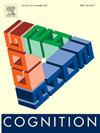How much face identity information is required for face recognition?
IF 2.8
1区 心理学
Q1 PSYCHOLOGY, EXPERIMENTAL
引用次数: 0
Abstract
Many studies have shown that degradation of face identity information impairs face recognition, however, when such information degradation reaches the limit of our face recognition ability remains unclear. Here we systematically decreased face identity information by morphing an increasing number of faces together and investigated how much identity information is required for recognizing a face in a morph. Our results show that participants could identify half of faces mixed in 3-identity morphs using only their memory of these faces (Experiment 1) and, when perceptual information is available, they could recognize two of three faces mixed in a morph (Experiment 2). When we systematically reduced the contribution of each identity to a face morph from 50 % to 6.25 % (i.e., morphing 2 to 16 faces together; Experiments 3 and 4), participants could still consistently recognize faces in a morph containing as little as 12.5 % of their identity information. Moreover, familiarity with faces enhanced participants' performance, whether they were asked to recognize all faces mixed in a morph in one go (Experiments 1 and 2) or to recognize them individually (Experiments 3 and 4). Finally, image-based similarity between the faces and morphs could predict how decreasing identity information impairs face recognition performance. Together, these results not only help quantify the minimum information required for face recognition but also offer new insights into the representational differences between familiar and unfamiliar faces.
人脸识别需要多少人脸身份信息?
许多研究表明,人脸身份信息的退化会损害人脸识别,然而,当这种信息退化达到我们人脸识别能力的极限时,我们仍然不清楚。在这里,我们通过将越来越多的人脸变形在一起来系统地减少人脸身份信息,并研究了在变形中识别人脸需要多少身份信息。我们的研究结果表明,参与者仅凭他们对这些面孔的记忆就能识别出混合在3个身份变体中的一半面孔(实验1),当有知觉信息可用时,他们可以识别混合在一个变体中的三张面孔中的两张(实验2)。当我们系统地将每个身份对面部变形的贡献从50%减少到6.25%(即一起变形2到16张脸);在实验3和实验4中,参与者仍然能够始终如一地识别只包含他们身份信息12.5%的变形面孔。此外,对面孔的熟悉程度提高了参与者的表现,无论他们被要求一次性识别混合在一起的所有面孔(实验1和2)还是单独识别它们(实验3和4)。最后,基于图像的人脸和变形之间的相似性可以预测身份信息的减少如何损害人脸识别性能。总之,这些结果不仅有助于量化人脸识别所需的最小信息,而且还为熟悉面孔和不熟悉面孔之间的表征差异提供了新的见解。
本文章由计算机程序翻译,如有差异,请以英文原文为准。
求助全文
约1分钟内获得全文
求助全文
来源期刊

Cognition
PSYCHOLOGY, EXPERIMENTAL-
CiteScore
6.40
自引率
5.90%
发文量
283
期刊介绍:
Cognition is an international journal that publishes theoretical and experimental papers on the study of the mind. It covers a wide variety of subjects concerning all the different aspects of cognition, ranging from biological and experimental studies to formal analysis. Contributions from the fields of psychology, neuroscience, linguistics, computer science, mathematics, ethology and philosophy are welcome in this journal provided that they have some bearing on the functioning of the mind. In addition, the journal serves as a forum for discussion of social and political aspects of cognitive science.
 求助内容:
求助内容: 应助结果提醒方式:
应助结果提醒方式:


